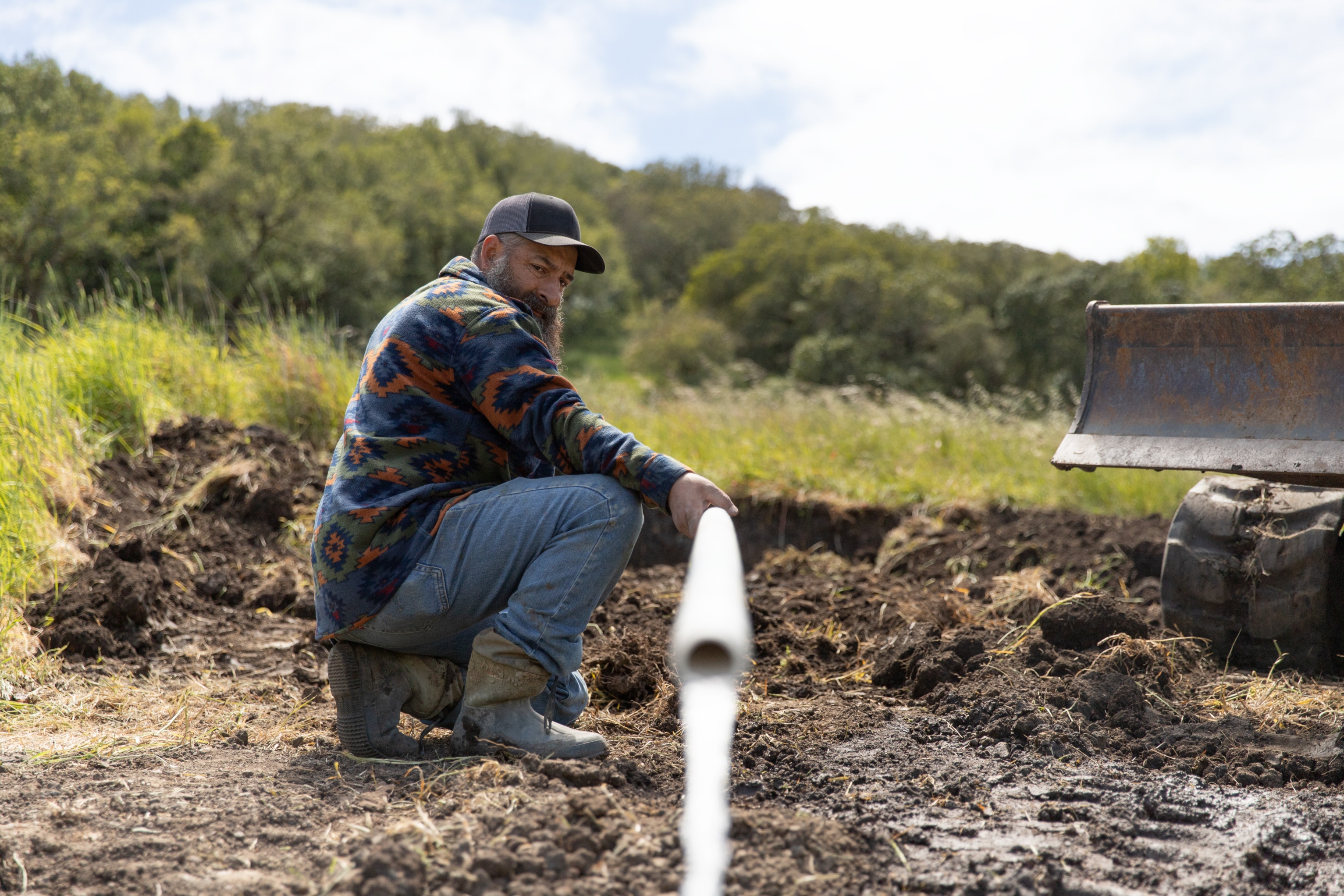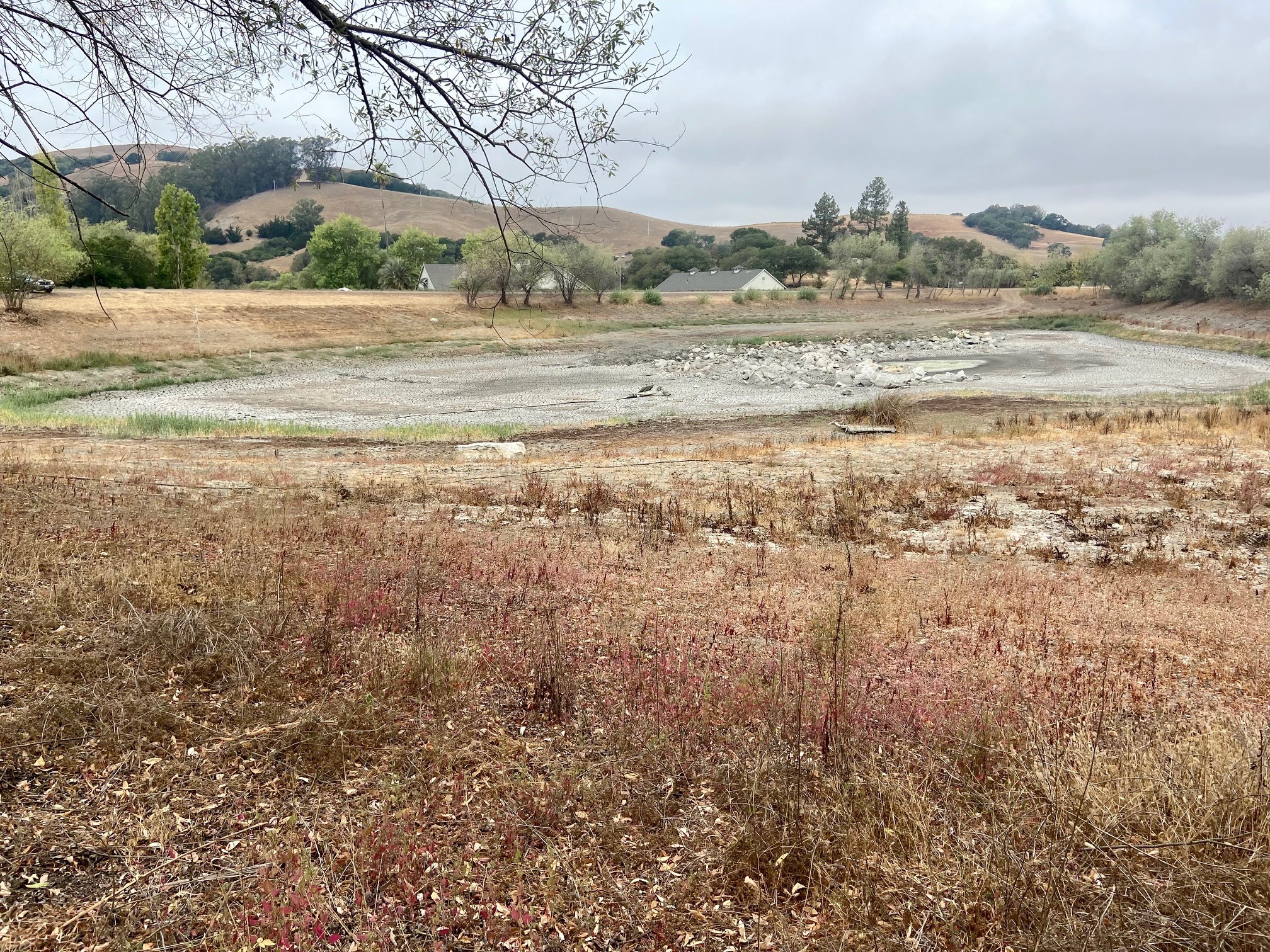- Contact Us
-
- 2022-2023 Agricultural Winter Storm Damage Assessment Form
- Fees
- Agricultural Disaster Survey
- Agricultural Statistics
- Air Pollution
- Animal Damage Control Program
- Apiary
- Apple Standards
- Biological Control
- Cannabis
- Direct Marketing Program
- Egg Quality Control
- European Grapevine Moth
- Frost Protection for Vineyards & Orchards
- Fruits Nuts & Vegetable Standardization
- Hazardous Materials Program
- Industrial Hemp
- Nursery and Seed Inspection
- Organic Program
- Pest Management
- Pest Exclusions
- Pest Eradication
- Pest Detection
- Pesticide Use Enforcement
- Plastic Recycle
- Project Review
- Ag Access
- Ordinances
- Crop Reports
- Forms
- Calendar
- Website Accessibility Assistance
- Back to Agricultural, Weights & Measures
For Immediate Release
Marin, Sonoma Agricultural Report Details Preparedness for Next Drought
Responding to drought through partnership to build capacity and deliver solutions
May 24, 2023
Thanks to significant rainfall over the past several months, the North Bay region has rebounded well from the drought that ravaged Marin and Sonoma county agricultural businesses from 2019 to 2022. Reservoirs, creeks, and other freshwater sources that feed farms and ranches – and thus feed humans --are well-stocked again. Now, the agricultural community is analyzing its response to the emergency.
A new report showcases the creative solutions used to adjust to the extreme dry conditions during those three years. The counties of Marin and Sonoma collaborated on the report with more than a dozen local, state, and federal partners. “Agricultural Resilience in the Face of Extreme Dry Conditions” can be found on the University of California Extension (UCCE) website.
As highlighted in the report, ranching and farming are vital to the economies of both Sonoma and Marin counties. A few of the locally grown and produced agricultural products include wine grapes, livestock, dairy products, poultry, shellfish, and fruit and vegetable growers. The 2021 combined total production value of Marin and Sonoma agriculture was more than $356 million, not including wine grapes that contribute an additional $540 million.
The report and collaborative effort highlighted the lessons learned from our predecessors to proactively respond to this drought and create long-term resiliency. The drought felt by Sonoma and Marin counties required an emergency response which no one agency or organization could possibly address independently. “We started the Marin-Sonoma drought collaboration (MSDC) to share resources and to brainstorm strategies on how to support the agriculture industry at that time and into the future through drought resiliency,” the report states. “The opportunity to collaborate and create drought resilient programs to support our hardworking ranchers and farmers was tremendous.”
A few key lessons learned were:
- Advanced recognition and planning for conditions in the winter of 2019 was key to coordination and response.
- Allocating and delivering water to meet minimum needs for both rural residential and agricultural uses is possible even under the most limited supply.
- State and federal response was more effective due to MSDC’s coordination and partnership.
- Frequent and routine communication between local leaders, technical and financial services providers, and agricultural producers was established and maintained.
- Local, state, and federal sources of funding were secured and distributed as an investment to counter the economic costs from extreme dry conditions to agricultural operations.
- Innovations in on-farm water management were scaled up through cost-share and technical assistance programs.
The three-year drought was the region’s worst since 1977-78 and is part of the most pronounced dry period in over 1,200 years. From 2019 to 2022, rainfall amounts ranged from 17% to 68% of normal rainfall.
David Lewis, Director of UCCE Marin, said annual rainfall in the western U.S. has been wildly unpredictable – bouncing between extremely high or low – and that climate change increases the severity of the extremes. “Our focus should be on building community resilience to the fluctuations,” he said. “That will come from us talking about the adaptations and responses needed across those swings. Concepts like drought and flood need to be replaced with water resource planning for extreme conditions.”
Marin and Sonoma counties were among 50 California counties mentioned in an April 2021 federal list of natural disaster areas because of the drought. State and local emergency declarations followed that month, and water agencies embarked on a public education campaign to urge conservation.
Sonoma and Marin helped lead the state drought declarations and implemented innovations, including advancing aquifer storage and recovery projects at two locations in the North Bay. The work of the agricultural partnership enhances this broader resiliency work.
Marin County Supervisor Dennis Rodoni, who represents residents and businesses in West Marin, and Sonoma County Supervisor David Rabbitt, who represents the southwestern portion of Sonoma County, were deeply involved in regular discussions with partners about the droughts impacts and building drought resiliency. They worked closely on agricultural water needs with respective water districts, resource conservation districts, land trusts, and county departments during the drought.
Rodoni cited the report as “an example of regional collaboration and partnership to respond to climate change and build community resilience for the recognized cycle of extreme wet and dry years that we are experiencing and will contend with going forward.”
“We are grateful for the collaboration with County of Marin and all the partners that contributed to the drought report,” Rabbitt said. “Documenting our experiences with climate emergencies will allow us continue to improve service and become more resilient during future droughts and times of crisis.”
Partners in developing the report include: Agricultural institute of Marin; USDA Farm Services Agency – Petaluma District Office; Gold Ridge Resource Conservation District; Marin Agricultural Land Trust; Marin County Department of Agriculture, Weights & Measures; Marin County Farm Bureau; Marin Resource Conservation District; Marin Water; USDA Natural Resources Conservation Service – Petaluma District Office; North Coast Soil Hub; North Marin Water District; Sonoma County Agricultural Preservation & Open Space District; Sonoma County Department of Agriculture, Weights & Measures; Sonoma County Farm Bureau; Sonoma Land Trust; Sonoma Resource Conservation District; Sonoma Water; University of California Cooperative Extension Marin; and University of California Cooperative Extension Sonoma.
# # #

The drought between 2019 and 2022 was the region's worst since 1977-78 and is part of the most pronounced dry period in over 1,200 years. (Matt Dolkas photo)

A pond at McEvoy Ranch in Petaluma, which typically held 9.7 million gallons, is show dried up in August 2021. (County of Marin photo)
# # #
SONOMA COUNTY MEDIA CONTACTS:
Dan Virkstis
Communications Specialist
County of Sonoma
(707) 565-2992
Daniel.Virksti@sonoma-county.org
Paul Gullixson
Communications Manager
County of Sonoma
(707) 565-1964
Paul.Gullixson@sonoma-county.org
MARIN COUNTY MEDIA CONTACTS:
David Lewis
Director
Marin County Office, University of California Cooperative Extension
(415) 473 4204
djllewis@ucanr.edu
cemarin.ucanr.edu
Stefan Parnay
Agricultural Commissioner
(415) 473 6700
sparnay@marincounty.org
www@marincounty.org/ag
###